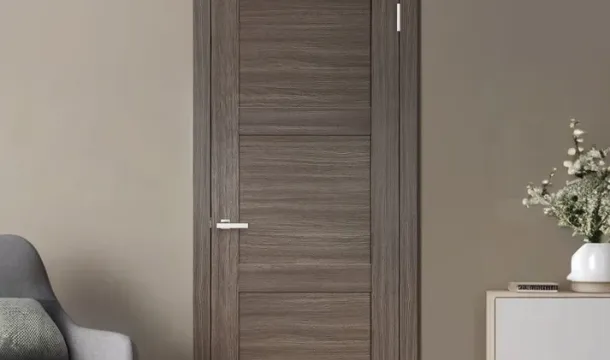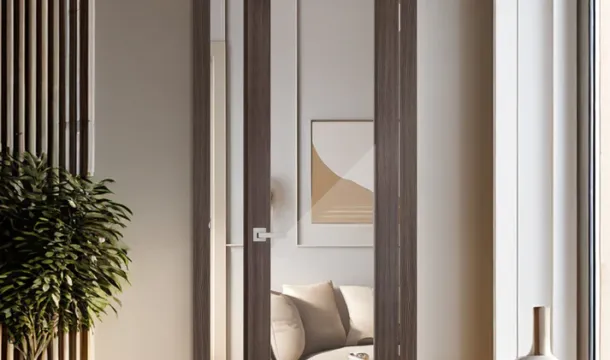Soundproofing Interior Doors: Which Options Are Best for Your Home?
Popular Articles
Interior doors play an important role in defining the comfort of your home, not just in terms of privacy but also in reducing noise levels. Whether you're looking to create a quiet home office, maintain privacy in the bedroom, or simply block out the hustle and bustle of daily life, soundproofing your interior doors can make a big difference. This comprehensive guide will help you understand the best soundproofing options for interior doors, their benefits, and how to choose the one that works best for your home.
1. Why Soundproof Your Interior Doors?
Interior doors are often one of the weakest points when it comes to sound insulation in a home. Many doors, especially hollow core doors, allow sound to easily pass through, leading to noisy disruptions that can interfere with your daily activities and comfort.
Common Reasons for Soundproofing:
-
Home Office: With the rise of remote work, creating a peaceful workspace has become essential. Soundproofing your office door can help you concentrate and eliminate distractions.
-
Privacy: Bedrooms, bathrooms, and other personal spaces need privacy. Soundproofing helps maintain that privacy by keeping sounds from escaping or entering the room.
-
Home Theater: If you have a home theater, soundproofing can improve your entertainment experience by reducing the noise escaping from the room and keeping external noises from interfering with your enjoyment.
2. Types of Interior Doors and Their Soundproofing Capabilities
Before diving into the specific soundproofing methods, it’s essential to understand the types of interior doors available and their natural ability to block sound.
Hollow Core Doors
Hollow core doors are the most common type of interior door found in homes due to their affordability. However, they offer minimal sound insulation because of their lightweight and hollow construction.
-
Soundproofing Needs: Hollow core doors generally need significant soundproofing enhancements, such as adding mass or replacing them entirely, to achieve effective noise reduction.
Solid Core Doors
Solid core doors are denser than hollow core doors and provide a higher level of sound insulation. These doors are made from composite materials or MDF (medium-density fiberboard), which gives them better noise-blocking properties.
-
Soundproofing Needs: Solid core doors already offer reasonable soundproofing, but additional measures like seals and sweeps can further improve their effectiveness.
Solid Wood Doors
Solid wood doors are the most effective type of interior door for blocking sound. Their dense structure naturally reduces the transmission of sound, making them ideal for spaces where quietness is a priority.
-
Soundproofing Needs: Solid wood doors may require less soundproofing compared to hollow or solid core doors, but adding seals and other enhancements can still make a noticeable difference.
3. Best Soundproofing Options for Interior Doors
There are several soundproofing methods you can apply to your interior doors, ranging from replacing the door entirely to adding materials that increase sound insulation. Here are the best options to consider:
1. Replace with a Solid Core or Solid Wood Door
If your current door is hollow core, one of the most effective ways to improve soundproofing is to replace it with a solid core or solid wood door. These doors are naturally better at blocking sound due to their density and construction.
-
Solid Core Doors: These doors are an affordable upgrade that significantly reduces noise levels compared to hollow core doors.
-
Solid Wood Doors: If your budget allows, solid wood doors are the premium choice for soundproofing and overall quality.
2. Use Soundproofing Door Seals
Gaps around your door can allow a significant amount of sound to pass through. Installing door seals helps eliminate these gaps and reduces noise transfer.
-
Adhesive Weatherstripping: Apply adhesive weatherstripping around the edges of the door frame to create an airtight seal.
-
Acoustic Door Seal Kits: These kits often include rubber or silicone seals that provide better soundproofing than standard weatherstripping. They are particularly useful for sealing larger gaps.
3. Install a Door Sweep
The gap at the bottom of your door can be a major source of noise leakage. Installing a door sweep can help block this gap and prevent sound from traveling through.
-
Automatic Door Sweeps: These sweeps are attached to the bottom of the door and automatically lower when the door is closed, providing a tight seal without affecting the door's movement.
-
Standard Door Sweeps: These are more affordable and effective at reducing noise but need to be manually adjusted during installation to ensure a snug fit.
4. Add Mass to the Door
Another effective way to soundproof a door is to add mass to it. The heavier and denser a door is, the better it can block sound.
-
Mass Loaded Vinyl (MLV): This is a flexible material that can be applied to the door to increase its mass. It is often used in professional soundproofing and can be painted over to blend with the door's finish.
-
Soundproofing Panels: Acoustic panels or soundproofing blankets can be installed on the door's surface. These panels help absorb and block sound, making them a practical choice for a home office or studio.
5. Use Soundproofing Curtains
While not directly applied to the door, soundproofing curtains can be hung over the door to further reduce noise. These curtains are made from heavy, dense fabric designed to absorb and block sound.
-
Heavy-Duty Curtains: These curtains can be installed using a curtain rod above the door frame and drawn across the door when extra soundproofing is needed.
4. Step-by-Step Guide to Soundproofing Your Interior Door
Now that you understand the different soundproofing options, here is a step-by-step guide on how to soundproof your interior door effectively.
Step 1: Inspect the Door for Gaps
-
Check for Gaps Around the Frame: Close the door and inspect the area around the door frame for gaps. Even small gaps can let in a lot of noise.
-
Identify the Gap at the Bottom: Most doors have a gap at the bottom, which can be a significant source of noise leakage.
Step 2: Apply Door Seals
-
Install Weatherstripping: Apply adhesive weatherstripping around the door frame to create a tight seal.
-
Attach an Acoustic Seal: For maximum effectiveness, consider using an acoustic seal kit designed specifically for soundproofing.
Step 3: Install a Door Sweep
-
Measure and Cut the Sweep: Measure the width of the door and cut the door sweep to fit.
-
Attach the Sweep: Install the door sweep at the bottom of the door to eliminate the gap between the door and the floor.
Step 4: Add Mass to the Door
-
Attach Mass Loaded Vinyl: If you need extra soundproofing, attach a layer of mass loaded vinyl to the door. Cut it to size and use adhesive to attach it securely.
-
Install Acoustic Panels: Consider adding acoustic panels to the door to absorb more sound.
Step 5: Test the Door
-
Close the Door and Listen: Once all the soundproofing measures are in place, close the door and listen for any remaining noise.
-
Check for Remaining Gaps: Make sure all gaps are sealed properly. If necessary, add extra weatherstripping or adjust the door sweep.
5. Additional Tips for Soundproofing Success
-
Use Quality Materials: Invest in high-quality soundproofing materials. Cheaper options may not provide the level of noise reduction you need.
-
Check Hinges and Hardware: Make sure the door hinges are secure, and there is no rattling when the door is closed. Tightening the hardware can also help improve soundproofing.
-
Consider the Room's Acoustics: Soundproofing the door is just one part of reducing noise. Consider adding rugs, curtains, and other soft furnishings to the room to help absorb sound.
Soundproofing your interior doors is an effective way to enhance the comfort and privacy of your home. Whether you're working from home, creating a peaceful bedroom environment, or simply trying to keep noise at bay, the right soundproofing methods can make a significant difference.
From replacing hollow core doors with solid core options to adding seals, sweeps, and soundproofing materials, there are a variety of ways to reduce noise effectively. By understanding your options and following a step-by-step approach, you can create a quieter, more comfortable living environment that meets your needs.
Popular Articles

Choosing the Perfect Interior Doors for Your Canadian Home

A Complete Guide to Choosing Interior Doors for Canadian Homes
